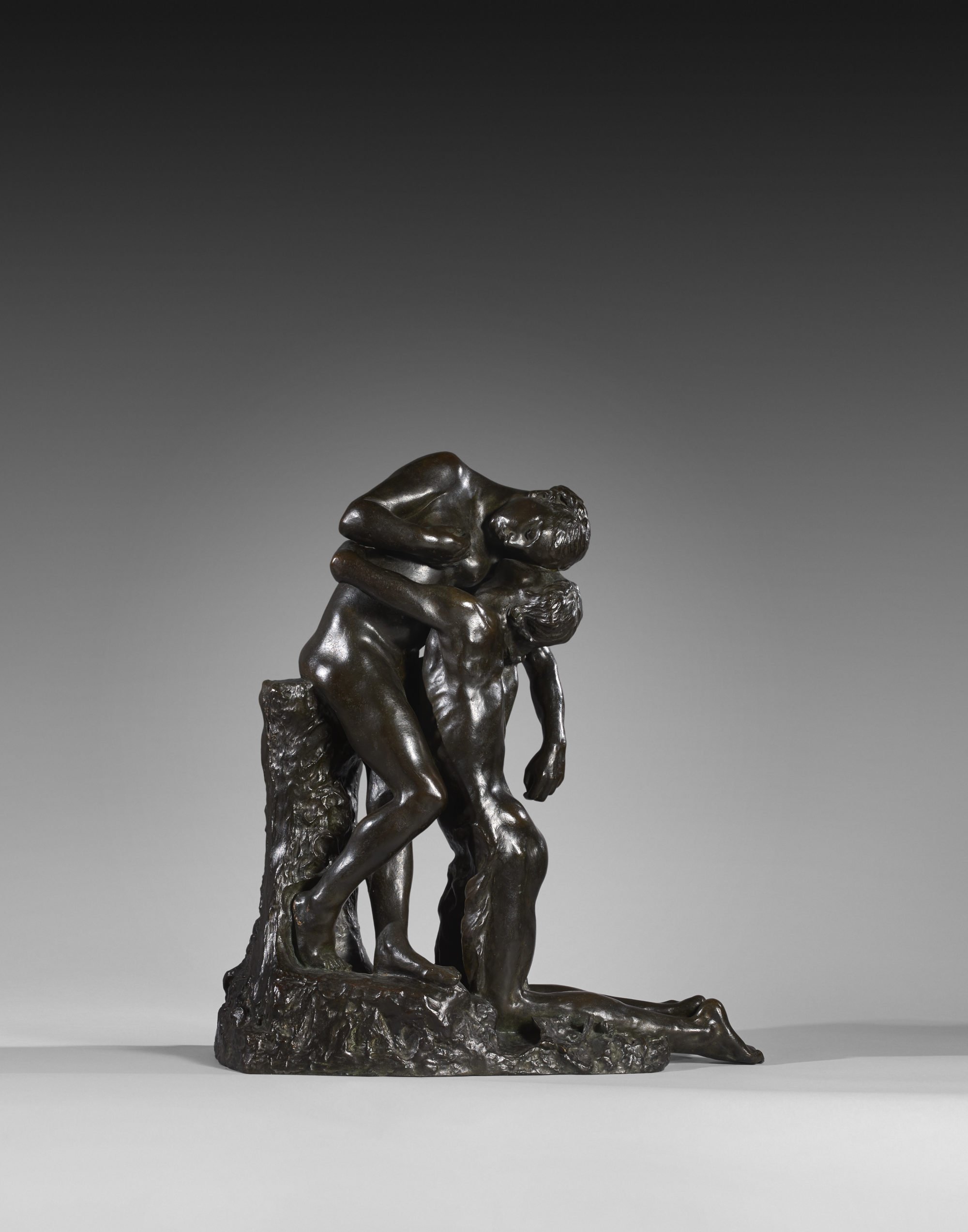
A historic ensemble of 20 extremely rare works by Camille Claudel—the French sculptor once better known as the lover and student of Rodin—broke records in Paris last night when they sold for a combined total of €3.6 million ($4.1 million), more than three times the high estimate. Artcurial sold 95 percent of the lots, including 75 percent of them at prices above their high estimates.
Once belonging to Claudel’s sister Louise Claudel, the collection of works in bronze, terra-cotta, plaster, and clay were consigned directly from the artist’s family and were the last major works to remain in private hands.
Camille Claudel, La petite Châtelaine à la natte courbe (ca. 1892-98). Photo courtesy of Artcurial.
The sale was led by Claudel’s figurative sculpture L’Abandon (ca. 1886), which was bought by an international collector for €1.2 million ($1.4 million), twice the high estimate. The well-known work is inspired by the Indian myth of Shakuntala, about a neglected wife, and is thought to draw on Claudel’s relationship with Rodin, who refused to leave his lifelong partner, Rose Beuret.
Meanwhile, the bust Le petite Châtelaine à la natte courbe (ca. 1892-93), which sold for €492,000 ($586,194) to a European collector, set a new auction record for a plaster work by the artist, and a sculpture of two embracing figures, Etude II pour Sakountala (ca. 1886), was pre-empted by the Musée d’Orsay for €467,800 ($556,000), a record price for a terra cotta by Claudel. (The museum now has a year to raise the money to pay for the work.)
Camille Claudel, Study no. 2 for Sakountala (ca.1886). Photo courtesy of Artcurial.
Claudel’s market has benefited from a surge of interest in recent years, perhaps partly due to the intrigue generated by her doomed affair with Rodin and her tragic life story, which saw her confined to a psychiatric hospital for most of her adult life, and where she died in 1943. Prior to her confinement, she struggled to escape from her famous mentor’s shadow and her fear that Rodin was plagiarizing her ideas led her to destroy much of her own work—a fact that contributed to its scarcity today.
“The scarcity of the pieces is a measure of Camille Claudel’s total production during the course of her life, barely a hundred pieces,” said Artcurial’s deputy director of modern art, Bruno Jaubert, in a statement.
Camille Claudel, L’Homme Penché (ca. 1886). Photo courtesy of Artcurial.
Jaubert said that the results indicate that the market has finally caught up to the quality of Claudel’s works. “Cast under the shadow of her master Auguste Rodin for a long time, tonight, Camille Claudel was finally celebrated by collectors of the whole world,” he said. “Her work, distinguished by some of the most important museums, has now been forever admitted to the pantheon of modern sculpture.”